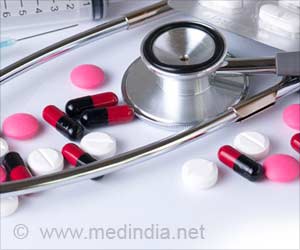Nanoplastics can weaken antibiotic effectiveness, making it harder to fight infections.

The adsorption of drugs on nanoplastics has severe biological impact
Go to source).
Nanoplastics and Antibiotics: A Dangerous Duo
In order to investigate whether and how nanoplastic particles in the body interact with antibiotics, the research team led by Lukas Kenner (MedUni Vienna), Barbara Kirchner (University of Bonn) and Oldamur Hollóczki (University of Debrecen) linked a common drug with widely used types of plastic. The focus was on the broad-spectrum antibiotic tetracycline, which is used to treat many bacterial infections, such as those of the respiratory tract, skin or intestines.‘#Nanoplastics are a silent threat! Nanoparticles can bind to antibiotics like tetracycline, reducing their effectiveness and potentially fueling #antibioticresistance. #antibiotics’





When it came to plastics, the choice fell on polyethylene (PE), polypropylene (PP) and polystyrene (PS), which are ubiquitous components of packaging materials, as well as nylon 6,6 (N66), which is contained in many textiles such as clothing, carpets, sofa covers and curtains. Nanoplastics are smaller than 0.001millimeters and are considered particularly harmful to humans and the environment due to their small size. Using complex computer models, the team was able to prove that the nanoplastic particles can bind tetracycline and thus impair the effectiveness of the antibiotic. "The binding was particularly strong with nylon," emphasizes Lukas Kenner, pointing out a largely underestimated danger indoors: "The micro- and nanoplastic load is around five times higher there than outdoors. Nylon is one of the reasons for this: it is released from textiles and enters the body via respiration, for example."
At the same time, binding to nanoplastics could lead to the antibiotic being transported to unintended sites in the body, causing it to lose its targeted effect and possibly cause other undesirable effects. "Our finding that the local concentration of antibiotics on the surface of the nanoplastic particles can increase is particularly worrying," reports Lukas Kenner on another detail from the study. This increase in concentration could lead to the development of antibiotic-resistant bacteria. Plastics such as nylon 6,6, but also polystyrene, which bind more strongly to tetracycline, could therefore increase the risk of resistance. "At a time when antibiotic resistance is becoming an ever greater threat worldwide, such interactions must be taken into account," says Kenner.
The study shows that exposure to nanoplastics is not only a direct health risk, but can also indirectly influence the treatment of diseases. "If nanoplastics reduce the effectiveness of antibiotics, the dosage poses a massive problem," says Lukas Kenner with a view to future studies looking at the influence of nanoplastics on other drugs.
Reference:
- The adsorption of drugs on nanoplastics has severe biological impact - (https://www.nature.com/articles/s41598-024-75785-4)
Source-Eurekalert















